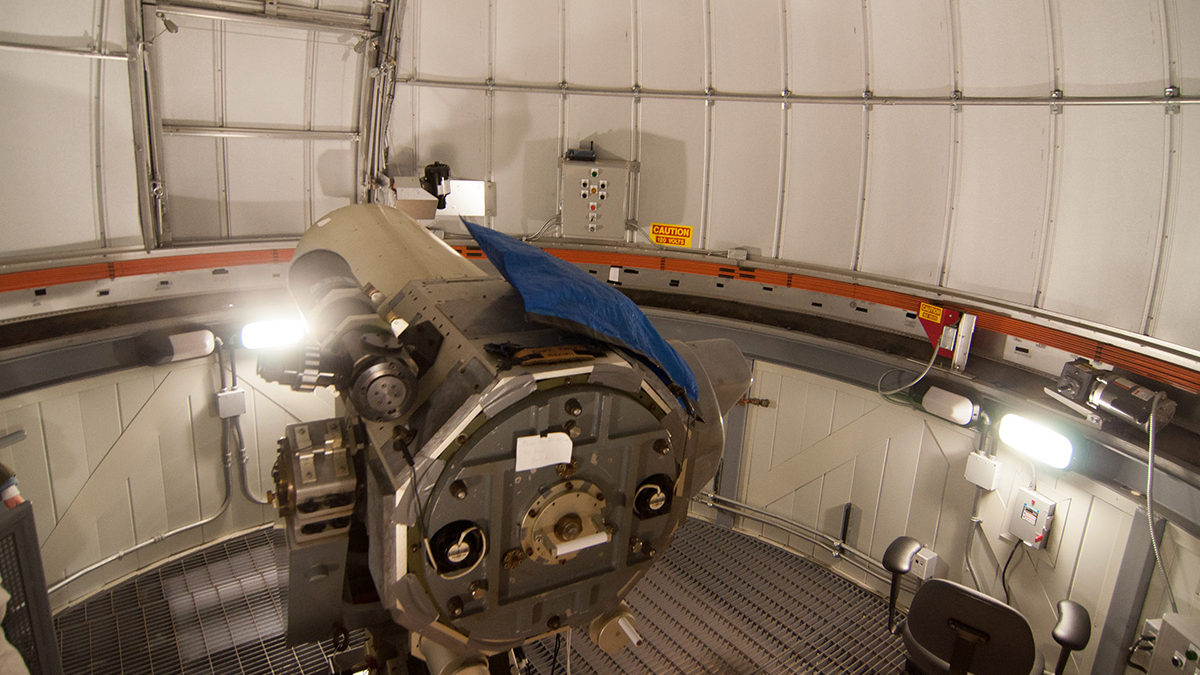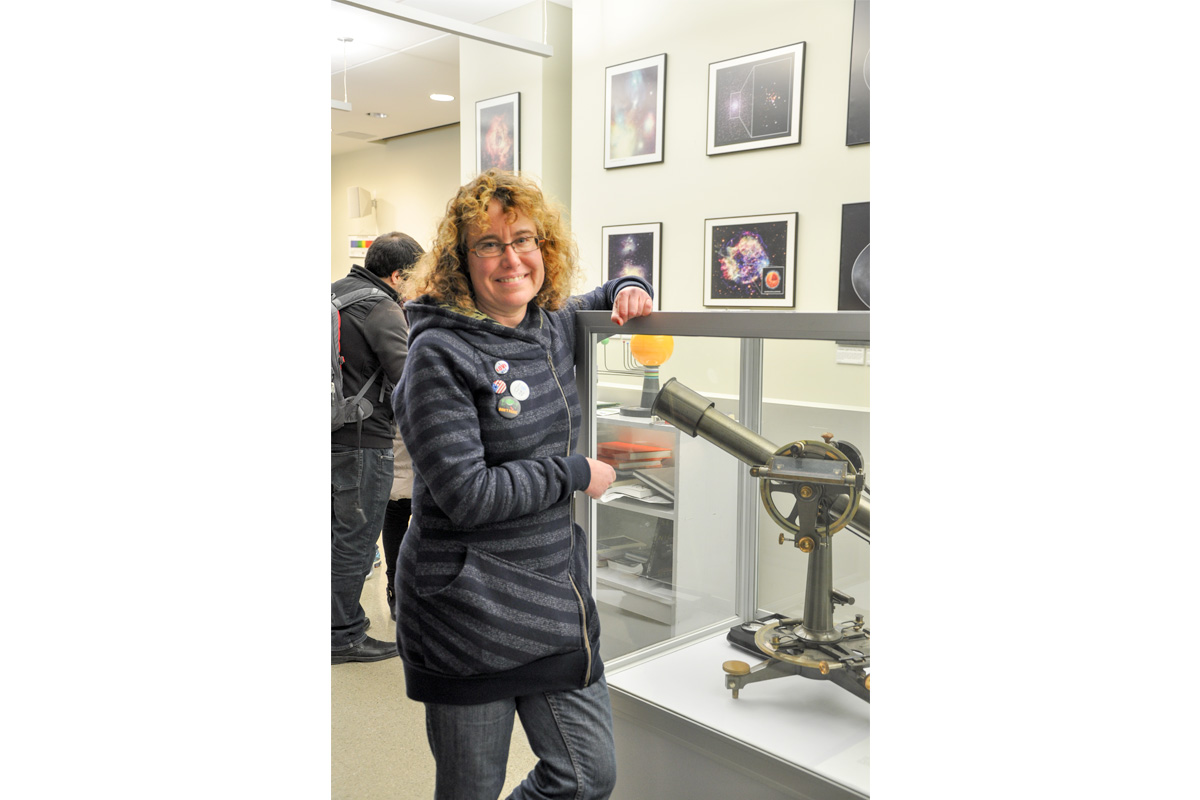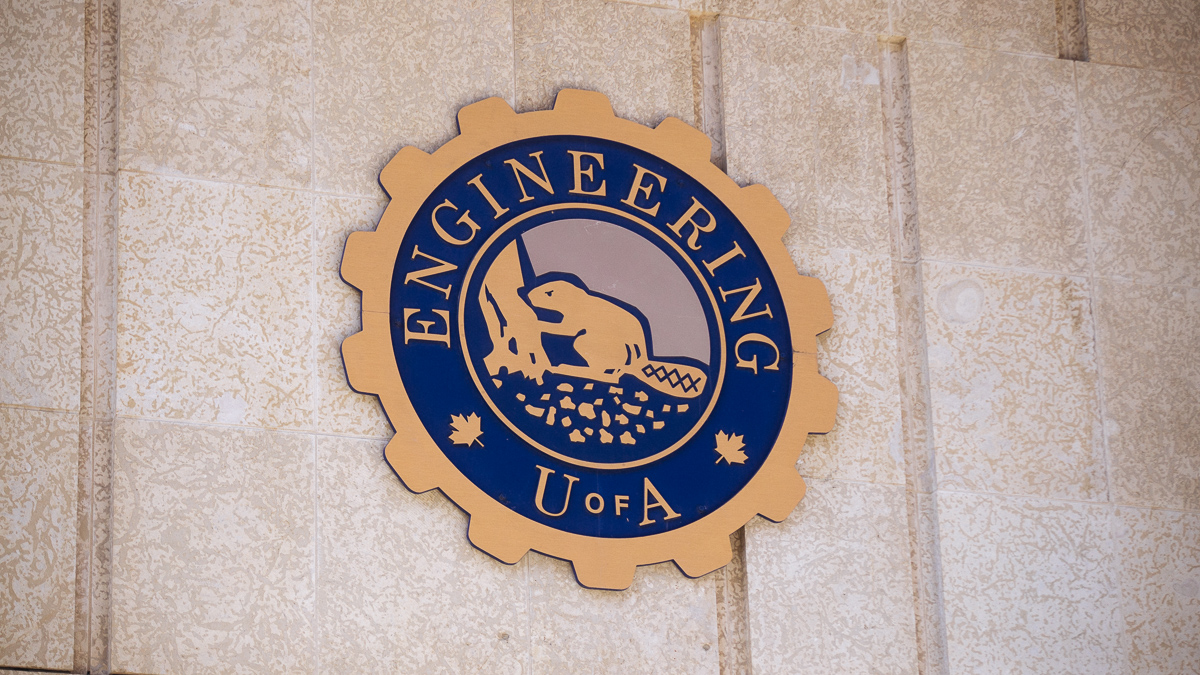Coming in hot: Viewing the sun at the U of A’s observatory
 James Davison
James DavisonAs the observatory in Centennial Centre for Interdisciplinary Science (CCIS) was about to open for solar viewing, a nervous astronomy student tapped her pencil against the blank pages of her reading week assignment.
The student was one of many greeted by physics professor Sharon Morsink on November 10 to view the sun through a special filtered telescope at the Department of Physics’ Astronomical Observatory in CCIS 5-240.
Within moments of the observatory’s afternoon opening, more students began to line up to see what Morsink calls “the big red circle.” The physicist adjusted the telescope’s eyepiece, and the nervous undergrad peered through and sketched what she saw. Next, a boy stepped onto a stool to reach the eyepiece.
“Oh cool,” the kid exclaimed to his parents.
Between noon and 1 p.m. in November, the sun is in an optimum position to view from the CCIS’s observatory deck. The pre-calibrated telescope is a hydrogen-alpha model that only shows red light emitted by the sun’s hydrogen. The telescope permits astronomy students and curious members of the public to see the sun’s otherwise invisible surface features, and has been in the CCIS observatory since opening
“We’re not doing any scientific research at this very moment,” Morsink said. “However, its eye-opening (for someone) to look up there and say, ‘Hey, I can see the sun,’ and ‘Hey, there are interesting features on the sun.”
Astronomical observation has had a scattered history at the U of A. Morinsk said the first on-campus observatory opened in 1943 near the corner of 87 Ave. and 114 St., but that building was demolished in 1955. In 1977, a telescope was mounted on the roof of the old physics building and a weekly viewing program began and continued until 2006. When the physics building was demolished to make way for the construction of CCIS, a temporary observation space was created on the roof of the Fine Arts Building until the CCIS’s observatory opened in 2011.

The three domes of the CCIS observatory each house a different telescope, and the observatory has additional portable telescopes used when the sky is clear and there are enough student volunteers helping out, Morsink said. She added that the astronomical viewing equipment is essential for the research conducted by undergrad and graduate students of the U of A.
The feature of the sun the nervous student sketched on November 10 was a “prominence” — a hoop or arch of charged hydrogen that forms when gas is trapped in the star’s magnetic field, Morsink said.
Aside from the weekly viewings of the sun from the observatory, the next big solar spectacle would be a total eclipse on August 17, 2017. However, the eclipse would only be visible from certain areas in the northern United States, Morsink said.
“In Edmonton we are only going to have a partial eclipse of the sun, which means the moon will (only) cover up part of the sun,” she said. “They’re fun to see.”
As astronomy students and members of the public took one last look at the big red circle through the telescope last week, two young sisters and their mother entered the observatory deck. The girls, with Morsink’s assistance, had a difficult time with the eye piece of the telescope and unfortunately were unable to view the sun through the telescope. Morsink’s solution was to lend the sisters a custom-built sun shield equipped with welder’s glass to view the sun safely unmagnified.
After taking in a view of the sun, both sisters exclaimed, “You gotta see this mom, it’s amazing!”




